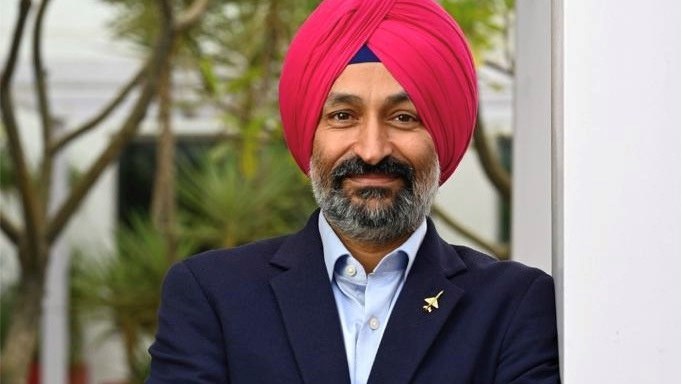
Bharti Airtel CTO Randeep Sekhon.
- India’s Bharti Airtel continues to invest in its national 5G network
- The operator believes 5G monetisation will take longer than 4G and that the consumer sector holds the key to a return on its investments, with ‘tariff repair’ action playing a key role
- New expansion deals with mobile network vendors are part of Airtel’s ongoing focus on reducing 5G data delivery costs, says the operator’s CTO, Randeep Sekhon
NEW DELHI – India Mobile Congress 2024 (IMC24) – While much of the telco sector’s 5G return on investment (RoI) hopes are pinned on the development of new services for the enterprise sector, India’s second-largest service provider, Bharti Airtel, is very much focused on its consumer customers to monetise 5G.
“From a monetisation perspective, I think it will happen largely in B2C [business-to-consumer] services. B2B [business-to-business or enterprise] services are also going on [but]… the larger revenue spinner will come from B2C use cases,” stated Bharti Airtel’s CTO, Randeep Sekhon, here at IMC24.
Airtel and market leader Reliance Jio pumped tens of billions of dollars into their 5G networks in 2022 and 2023 to achieve speedy national coverage, and both have been rapidly growing their 5G customer bases. As of 30 June, the end of its fiscal first quarter, Airtel had 90 million 5G customers, accounting for about a quarter of its 354.5 million mobile connections (Jio has about 148 million 5G customers currently).
Sekhon noted that there is revenue potential from private 5G networks and other 5G B2B services, but that it has limited scope – perhaps due, in part, to its initial non-standalone 5G deployment that relies on a 4G core platform, though an upgrade to a 5G standalone core is imminent – and cannot be compared with the returns from the consumer segment, where services such as 5G-enabled fixed wireless access (FWA) are gaining traction for both Airtel and its main rival, market leader Reliance Jio.
Airtel has been highlighting the difficulties associated with 5G monetisation for some time. The company’s managing director and CEO, Gopal Vittal, referenced the challenge during the operator’s fiscal year earnings call in May, but noted that the company will continue to invest in the expansion of its 5G network despite the current return on investment scenario.
“There is limited monetisation on 5G but… today, all of the capacity investments are going behind 5G. We have stopped investing on any capacity investments on 4G… the returns the industry really needs is predicated on tariff repair” – which essentially means price increases – “and this is really the heart of the problem that we have today – our pricing and tariffs are at an absurdly low level relative to any other part of the world so tariff repair is solely needed for return ratios to improve,” stated Vittal during the earnings call. He also noted that Airtel’s return on capital employed (RoCE) is just 9.5%, “which is extremely low for a business that is so essential to the digital spine of this country. Clearly tariff repair is needed to set this right,” he added.
Those comments came only weeks before mobile price rises were introduced in July, though there’s still a long way to go before Airtel is happy with its RoCE ratio.
During the operator’s fiscal first-quarter conference call in early August, Vittal noted that “the industry undertook a round of tariff repair in early July, which was much needed for the financial health of the industry. The early signs from this repair are encouraging with the full flow through expected in two quarters. I do want to underscore that the industry needs a minimum ARPU [average revenue per user] of 300 rupees for long-term sustainable investments and respectable return ratios,” stated the CEO. In the fiscal first quarter that ended in June, Airtel’s mobile ARPU stood at 211 rupees ($2.51).
Vittal’s hope that further price rises can provide a better 5G RoI might not be in vain, as the expectation in the market is that India’s regulators will allow tariff increases over the coming years, with analysts at investment bank JPMorgan predicting an average Indian telecom tariff hike of 15% by 2027, as TelecomTV noted last week, though that still wouldn’t help to take Airtel’s ARPU to the 300 rupees level that the CEO is targeting.
In the meantime, Airtel continues to invest in its 5G networks. Earlier this week, talk emerged that Ericsson had been awarded a major new 5G deal by the operator, though Sekhon referred to it only as a “regular deal… It is continuing our relationship with them. It is for 5G expansion in the same circles [service areas]… it is not a big thing,” he added. As per the original contract in 2022, Ericsson provides 5G infrastructure to Airtel in 12 ‘circles’ of a total of 22.
And as this article was published, speculation emerged that new 5G expansion contracts are being awarded by Airtel to Nokia and Samsung Networks as well as Ericsson.
Airtel is keen on 5G expansion because the mobile technology’s inherent efficiencies help the operator to bring down the cost per gigabyte (Gbyte) of data delivered, which is a crucial metric in a country such as India with low ARPU levels. Sekhon noted that while “it will take longer for 5G monetisation” than with 4G, the cost of delivering each Gbyte of data over a 5G network is “much lower than [over] 4G. So, for normal wireless capacity, it is better and cheaper to deploy 5G,” said the CTO.
-Gagandeep Kaur, Contributing Editor, TelecomTV
Email Newsletters
Sign up to receive TelecomTV's top news and videos, plus exclusive subscriber-only content direct to your inbox.




